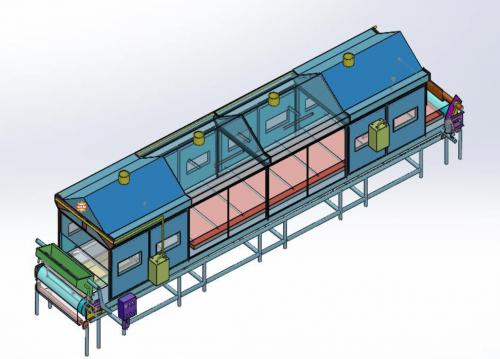Everything You Need To Know About Refractance Window Drying Technology

Refractance window drying is one of the most effective techniques to dry liquid, semi-liquid and slice structures of fresh whole food items. Nowadays, this technique is considered an advanced method for drying parameters and product properties compared to the several negative aspects of other traditional drying techniques. Refractance Window Dryer has an advantage on many parameters like energy efficiency, cost, scalability and end-product quality.
The drying technologies are categorised as first, second, third and 4th generation. The first-generation dryers are called cabinet and bed type of dryers like kilns, rotary flow conveyors, truck trays and tunnels where the hot air is used as the medium to transfer the heat.
Spray and tumble dryers come under the second category, and freeze, and osmotic dehydration come under the third category. Microwave drying, heat pump drying, fluidised bed drying, infrared drying and radio frequency drying are found in the 4th generation.
What Is The Mechanism Of Refractance Window Drying Equipment
Three types of heat transfer occur in this mechanism. They are conduction, convection and radiation. ConductionConduction heat transfer is dominant in the system, but each type of heat transfer happens in different parts of the drying system. The conduction, convection and radiation happen in the hot water film interface, the conduction and radiation happen throughout the film, and convection happens in the air-film interface.
The capacities of the RWD system are comparable to the scale with a spray dryer and drum dryer. Per the installation economy, it is very simple and cost-effective compared to freeze drying. More than 85% of industrial dryers work to perform the heat transfer as a conventional in hot air, which results in higher drying time in poor quality products.
Advantages of Refractance Window Drying Technology
Have low drying temperature
Possibility to dry the high sugar contents
High energy efficiency
Short drying time
Retention of bioactive components
Low cost of equipment
No need to use any chemical additive
Retain complex flavours and aroma
Obtaining high-quality products
Different Applications Of Refractance Window Drying Equipment
This technology is used in different applications and includes-
Dairy and egg products
Meat, fish and poultry
Fruits and vegetables like purees, pulp, slice and pulps
Pharmaceuticals
Fine chemicals
Beverages and concentrates mixes
Cereals, grains and starches
These attributes of Refractance Window Drying Equipment make it best for processing high-valued food items, food supplements, nutraceuticals and high standards of quality and safety measures. Use the best products for high-end results.
Post Your Ad Here
Comments